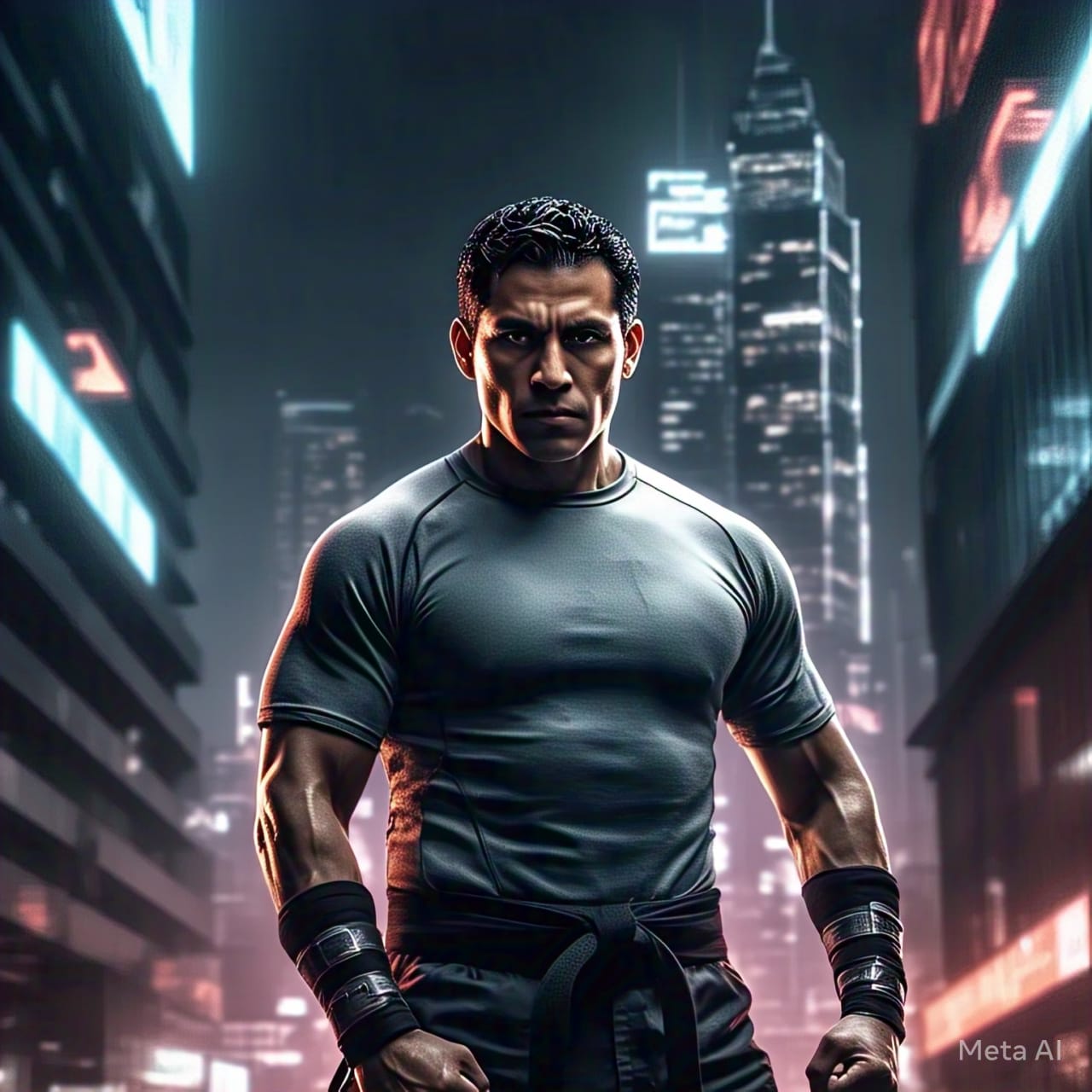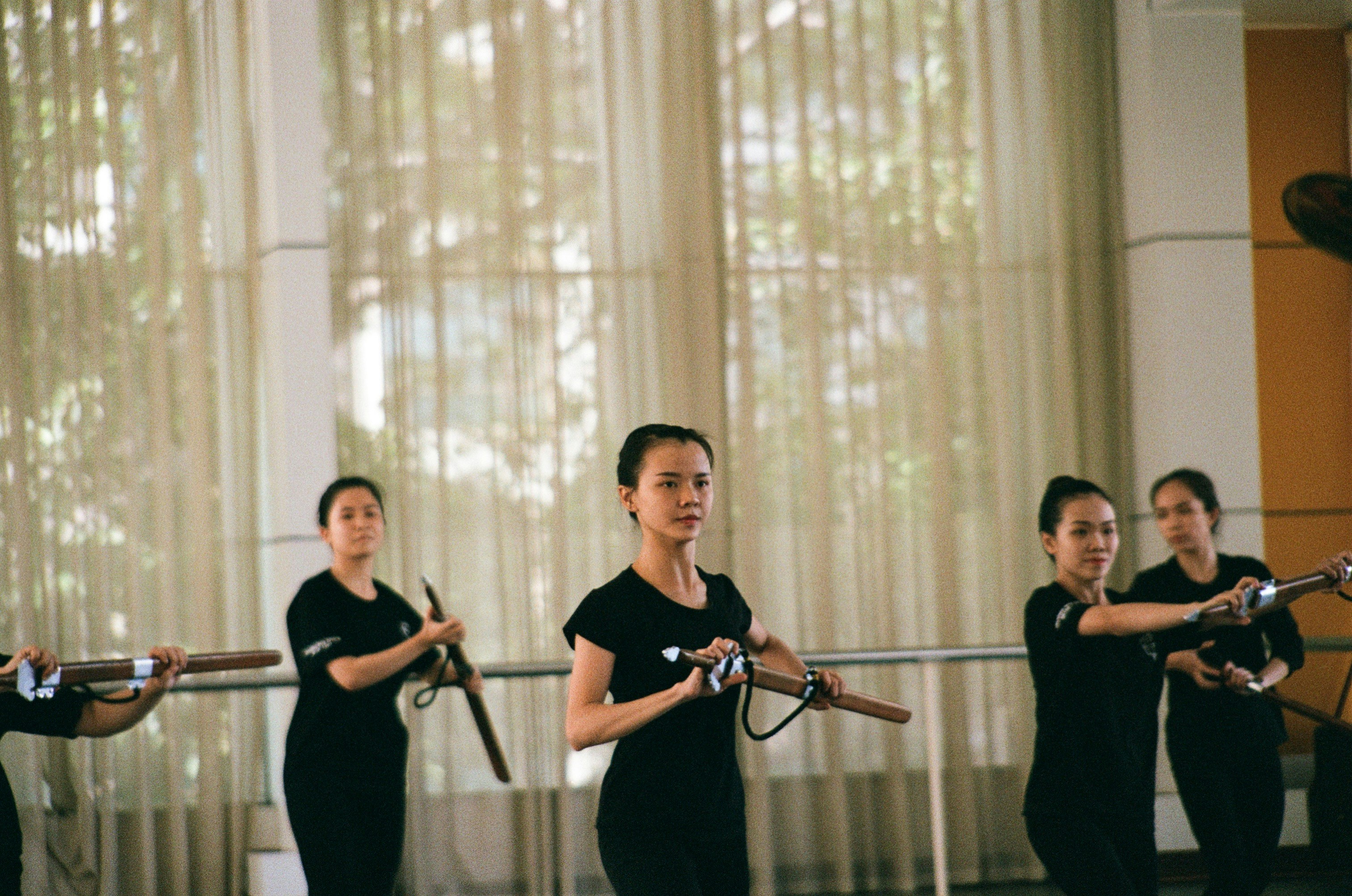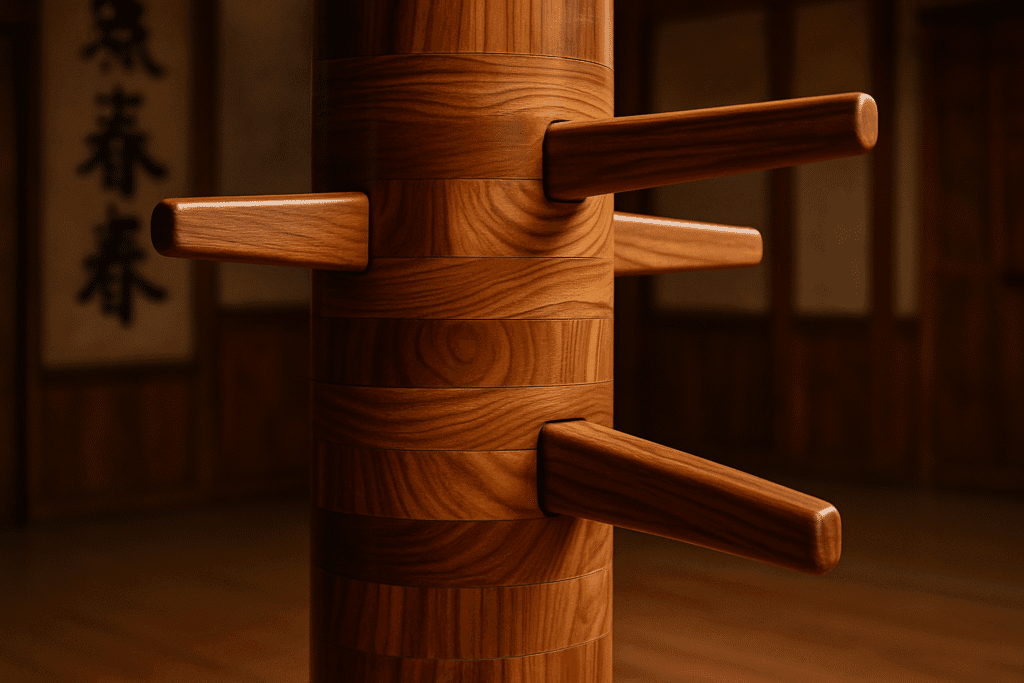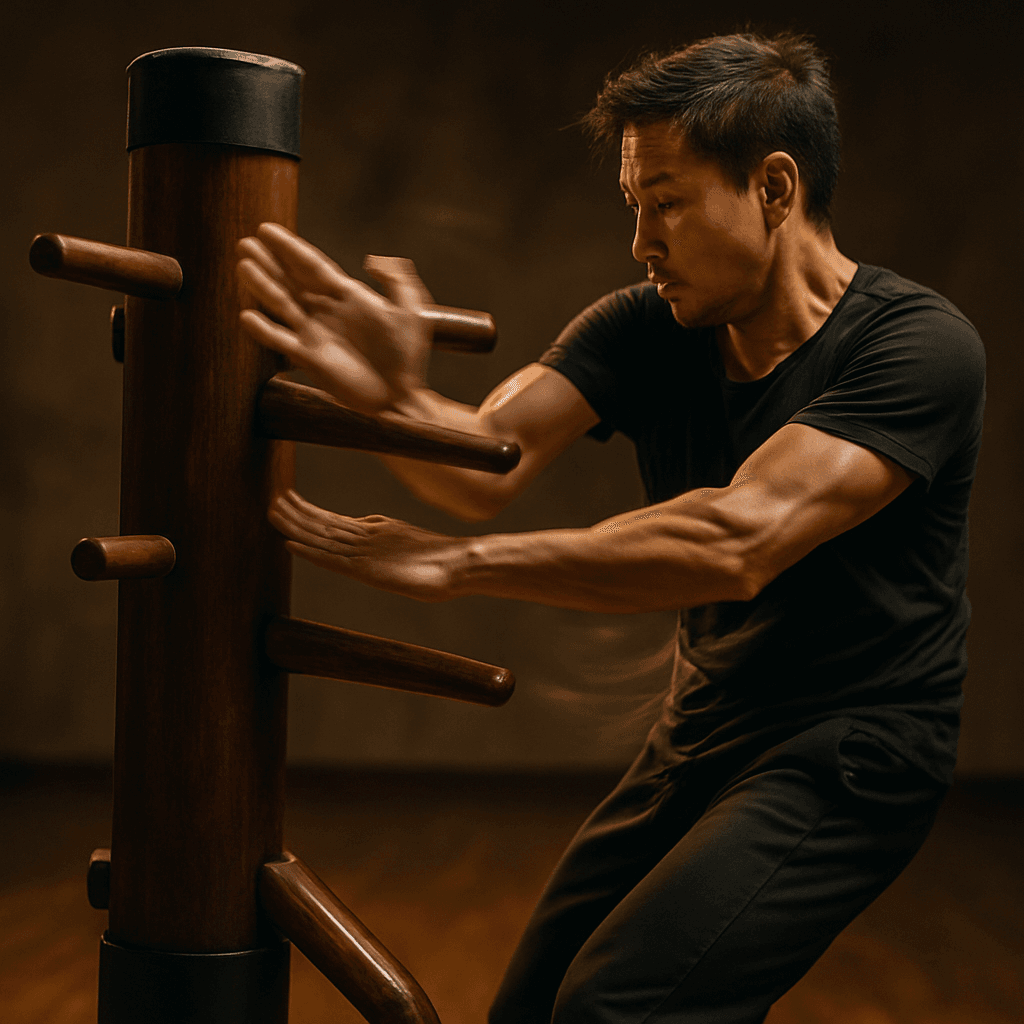The emergence of artificial intelligence (AI in martial arts) in various fields has sparked debates regarding its efficacy, particularly in areas reliant on human intuition and skill.
One such field is martial arts, where the profound techniques of traditional disciplines like Wing Chun are passed down through generations of dedicated masters.
As we delve into this intriguing juxtaposition, questions arise:
Can AI truly match the training prowess of seasoned Wing Chun instructors?
Is there room for technological advancement in a realm that has historically championed human teaching methods?
AI technology has made inroads into numerous sectors, revolutionizing fields from healthcare to finance, and its influence is increasingly evident in martial arts training.
This integration of AI is often characterized by the development of training programs, virtual coaches, and even personalized training plans that adapt to individual learning curves.
The perceived advantages of AI systems include the ability to analyze vast amounts of data and provide real-time feedback,
which could potentially extend the reach of martial arts training to those unable to access traditional instruction.
Conversely, the essence of Wing Chun is deeply rooted in centuries of practice and philosophy, relying on the intuition and experience of masters who have honed their skills over time.
These instructors offer nuanced insights, foster personal connections, and cultivate a deep understanding of the art, aspects that AI cannot replicate.
The wisdom gained through years of martial arts experience and the subtleties of human interaction play a crucial role in the training experience.
So,
This blog post aims to explore the merits of AI in Wing Chun training compared to traditional methods.
It will assess the strengths and weaknesses of both approaches while investigating whether AI can deliver a training experience comparable to that offered by human Wing Chun masters.
In this pursuit, we might uncover whether technology can truly augment the traditional practices that have defined martial arts for generations.

Videos are added as random thoughts 💭 💭..
Understanding Wing Chun: A Martial Art With Deep Roots
Wing Chun is a distinct form of Chinese martial arts that has garnered attention for its effective self-defense strategies and practical techniques.
Originating in Southern China during the 18th century,
Wing Chun was developed as an efficient fighting system designed to empower individuals,
especially women, to defend themselves against larger adversaries.
The art is deeply rooted in the principles of simplicity, directness, and efficiency, focusing on utilizing an opponent’s force against them rather than relying solely on brute strength.
Historically, Wing Chun is credited to a Buddhist nun named Ng Mui, who passed the knowledge onto a young woman named Yim Wing Chun.
This lineage reflects the martial art’s foundational philosophy that emphasizes adaptability and intuitive responses to combat situations.
The training methods associated with Wing Chun primarily consist of repetitive drills that enhance reflexes, develop precision, and cultivate timing.
One of the most recognized components of Wing Chun training is the Siu Nim Tao form, which is the foundational set of movements designed to cultivate proper body mechanics and generate power through relaxed movements.
Key techniques include the chain punch, which emphasizes continuous, straight-line attacks, and close-quarters combat strategies that maximize effectiveness in confined spaces.
Wing Chun practitioners are trained to maintain a strong center while executing techniques, thereby promoting stability and control.
Additionally, the use of wooden dummies and sparring exercises enhances the practitioner’s ability to adapt their skills in real-world situations, establishing a practical approach to self-defense.
Through its focus on vitally core techniques and seamless adaptability, Wing Chun stands as a testament to the effectiveness of martial arts in personal defense.
As technology and training methods evolve, the intriguing intersection of traditional practices and the integration of artificial intelligence into martial arts training reveals a new frontier worth exploring.
The Rise of AI in Martial Arts Training
The integration of artificial intelligence (AI) into martial arts training signifies a transformative shift in how practitioners learn and refine their skills.
As technological advancements continue to evolve, AI-powered applications have emerged as pivotal tools for both novice and experienced martial artists.
These applications leverage sophisticated algorithms to provide tailored training programs, ensuring that each practitioner receives a personalized learning experience.
For instance, platforms such as MyFightPal and TrainHeroic utilize AI to analyze performance metrics, allowing users to focus on specific areas for improvement.
Moreover, the use of virtual reality (VR) trainers has gained traction in martial arts education.

These immersive environments create realistic training scenarios, enabling users to spar against AI-generated opponents.
The VR trainers not only enhance engagement but also allow for safe practice of complex techniques and strategies.
By simulating various combat situations, these systems can boost a martial artist’s reaction time and adaptability, crucial skills for real-world applications.
In addition to VR, motion-tracking systems have pioneered a new frontier in training efficiency.
Devices equipped with sensors can capture detailed movement data, providing instant feedback on technique execution.
By analyzing angles, speed, and accuracy, these systems offer insights that are typically hard to assess in a traditional training environment.
This immediate feedback allows martial artists to make real-time adjustments, fostering a deeper understanding of their techniques.
The introduction of AI in these forms exemplifies a broader trend where technology enhances personalized training and data analysis in martial arts. Rather than replacing human instructors,
AI supplements their expertise, creating a more robust training ecosystem.
As martial artists embrace these innovations, the ability to receive immediate and insightful feedback will only enhance their journey toward mastery, making the adoption of AI in martial arts training a valuable progression in the sport.
Comparative Analysis: Speed of Learning
The speed of learning in martial arts, specifically Wing Chun, can vary significantly between AI-powered training solutions and traditional human instruction.
With the rise of technology, the integration of artificial intelligence into training applications raises questions about the effectiveness and efficiency of learning techniques compared to the personalized guidance provided by an experienced sifu.
One of the primary advantages of AI-driven training apps is their ability to adapt to individual learning speeds.
These systems utilize algorithms that analyze a student’s performance and provide tailored feedback, allowing learners to progress at their own pace.
This feature is particularly beneficial for beginners who may require more time to grasp fundamental techniques.
The immediate analysis offered by AI can facilitate a quicker understanding of movements and concepts,
enabling students to advance rapidly through initial stages of their training.
However, while AI can offer a structured learning path, traditional training with a human instructor fosters an environment of nuanced feedback and personalized correction.
A sifu can observe the intricacies of a student’s form, detect errors that an app might overlook, and provide on-the-spot adjustments.
This dynamic interaction can lead to a deeper comprehension of techniques, as well as the contextual application of Wing Chun’s principles.
Furthermore, the gradual building of skills in a supervised environment allows for a more holistic development of both physical abilities and mental focus, crucial components in martial arts.
In essence, while AI may accelerate certain aspects of learning through tailored feedback and efficiency,
it lacks the immersive mentorship and contextual understanding provided by traditional training with a sifu.
Each method has its unique advantages; the combination of both could potentially yield the best outcomes for students eager to master Wing Chun.
Balancing technological advancements with human expertise may result in a more comprehensive and effective learning experience.
Comparative Analysis: Accuracy and Technique Refinement
The advancement of artificial intelligence (AI) has brought about a paradigm shift in how martial arts, such as Wing Chun, are taught and practiced.
One of the most pressing questions in this realm is the accuracy of techniques imparted by AI compared to those conveyed by experienced Wing Chun masters.
Accuracy in martial arts is paramount; it extends beyond mere precision of movements to include the subtleties of technique that contribute to effective execution during combat.
Thus, evaluating AI’s capabilities in this area is essential.
AI systems designed for martial arts training use extensive databases and algorithms to analyze and assess the techniques performed by practitioners.
Unlike a human instructor, who brings personal experience and intuition to their critique, AI relies heavily on programmed assessments.
This often enables a high degree of accuracy in recognizing forms and techniques.
However, the limitations emerge when the intricacies of Wing Chun, such as the feeling behind a move or the subtleties required for timing and distance, come into play.
Struggle
AI can struggle to replicate the nuanced feedback that a seasoned instructor provides, specifically when it involves correcting form adjustments that are rooted in muscle memory and practitioners’ inherent adaptability.
Muscle memory plays a critical role in martial arts training, allowing practitioners to respond instinctively during a confrontation.
While AI can measure performance metrics and provide broad corrections,
it lacks the capability to cultivate the muscle memory essential for martial arts proficiency.
This intricacy is often refined under the watchful eye of a master, who can tailor feedback to each student’s unique learning curve.
Therefore, while AI presents certain advantages in tracking progress and delivering immediate corrections, it falls short of replicating the depth of training afforded by traditional mentorship.
The journey to mastery in Wing Chun encompasses not solely technical accuracy but also the refinement of instinctive responses that AI has yet to fully emulate.
The Human Element: Emotional and Social Factors
In the realm of martial arts, especially in practices such as Wing Chun, the significance of the human element cannot be overstated.
Training under the guidance of a master presents unique emotional and social dimensions that significantly influence the learning experience.
One of the most profound aspects is the mentorship relationship, where students not only learn techniques but also receive personal insights and philosophies that enrich their understanding of martial arts.
This mentorship fosters a bond, providing students with motivation that is often deeply rooted in their connection with their instructor.
Moreover, training alongside a master cultivates a supportive environment where emotional support plays a vital role.
This human interaction enables practitioners to express their frustrations, fears, and aspirations openly.
In contrast to AI training systems, which may offer technical guidance or corrections, they lack the empathy and understanding that comes from human interaction.
These interpersonal relationships are crucial in building confidence, as a student often seeks affirmation and encouragement from their mentor.
Such emotional support can propel individuals to overcome challenges and push beyond their perceived limits —
a feat that an AI cannot replicate.
Additionally, the social dynamics within a martial arts school contribute to an enriched learning environment.
Engaging with peers encourages healthy competition, opportunity for cooperative learning, and shared experiences that enhance the overall journey of mastering martial arts.
These relationships foster a sense of community that is beneficial for personal growth and resilience.
While AI may provide structured training regimens, it misses out on nurturing these essential social connections.
The extraordinary benefits of the human element in training highlight the irreplaceable role that mentorship and emotional support play in the martial arts experience,
reinforcing the argument that while technology may assist,
it cannot replace the depth of human connection.
Case Studies: Students’ Experiences with AI vs. Masters
Recent studies and testimonials from students who have engaged with both AI training systems and experienced Wing Chun masters present an intriguing perspective on their respective advantages and limitations.
One prominent case involves a martial artist named David, who initially trained under a traditional Wing Chun master for two years before switching to an AI-based training program.
David expressed that the personalized feedback from his human instructor provided invaluable insights into his techniques, particularly regarding his stances and hand positions.
This hands-on training created a strong foundation, allowing him to develop a deep understanding of the martial art’s principles.
Conversely, when David transitioned to an AI training system, he noted a remarkable increase in the frequency and variability of drills.
The AI program utilized detailed motion-capture technology to analyze his movements and recommend adjustments almost instantly.
While he appreciated the enhanced practice due to the system’s limitless availability,
David encountered challenges in terms of the emotional support and motivation that human instructors typically provide.
He felt that the AI could not replicate the motivational aspects of a mentor, which are crucial for sustained engagement in any rigorous training program.
Another case study involves Sarah, who has trained with both methods concurrently.
She highlighted the distinct benefits of the AI applications in providing tailored drills that adapt as her skills developed, which kept her training sessions fresh and focused.
However, she emphasized that the nuances of human interaction, such as the ability to read a student’s body language or emotional state, are something that AI currently lacks.
Overall, her experience suggests that while AI offers innovative training methods,
the mentorship of a seasoned Wing Chun master remains irreplaceable in cultivating not just technical skills, but also the mental resilience necessary to excel in martial arts.
Future of Wing Chun Training: AI and Human Collaboration
The evolution of technology has commenced a transformative era in various fields, and martial arts is no exception.
As we look to the future of Wing Chun training, the integration of artificial intelligence (AI) holds the potential to significantly enhance the learning experience while preserving the invaluable wisdom imparted by human masters.
Notably, AI can be employee to complement traditional training methods,
rather than replace them, thus maintaining the foundational aspects that make Wing Chun both a captivating and effective martial art.
One possible hybrid training model would involve AI-driven platforms that offer real-time technical feedback during practice sessions.
These AI systems could analyze a student’s movements, track their progress,
and suggest adjustments to improve technique.
By leveraging machine learning algorithms, AI can provide personalized training regimes, accounting for individual strengths and weaknesses.
This tailored approach empowers students to learn at their own pace while allowing instructors to focus on refining more complex skills or principles during human-led training sessions.
Furthermore, the collaboration between AI and human instructors could also facilitate enhancing in learning outcomes.
For instance, virtual reality (VR) technology, coupled with AI, may provide immersive scenarios that challenge students in real-time fight simulations.
This interaction not only deepens understanding but cultivates reaction times and strategic thinking — a critical component of effective Wing Chun practice.
Such innovations fit seamlessly within the ethos of martial arts, where adaptability and continuous improvement are paramount.
Incorporating AI into Wing Chun training modalities presents opportunities for innovation while ensuring that the core values of respect, discipline, and personal growth remain intact.
As practitioners explore this fusion of technology and tradition, the future of Wing Chun may see a significant transformation, fostering a new generation of fighters equipped with both age-old wisdom and cutting-edge tools.
Conclusion: Who Trains Better? The Final Verdict
As we have journeyed through the exploration of AI versus Wing Chun masters in the realm of training efficacy, it is evident that both approaches possess unique advantages that cater to different aspects of learning and mastery.
On one hand, AI offers unparalleled data processing and the ability to simulate various scenarios,
which allows practitioners to engage in personalized training regimens.
The precision in tracking progress and adapting techniques in real-time gives AI a distinctive edge,
especially for those seeking to quantify their growth and work on specific weaknesses.
Conversely, the human element found in Wing Chun masters brings an irreplaceable depth to training that AI cannot replicate.
They offer insights drawn from years of experience, emphasizing the nuances of instinctive responses,
emotional awareness, and the understanding of physical connection in combat.
This mentorship can inspire and motivate martial artists on a level that transcends mere mechanics of technique.
The adaptability and creativity that a seasoned master brings to the training environment serve to create a profound bond between teacher and student,
often yielding results that are both dynamic and deeply personal.
Ultimately, the effectiveness of training methodologies in martial arts lies in individual preference.
Some practitioners may lean towards the advanced technological aspects provided by AI,
valuing the analytical feedback and tailored methods that align with their goals.
Others may prioritize the traditional approach, appreciating the wisdom and intuition that only human trainers can provide.
As you reflect on your own martial arts journey, consider what elements resonate with you.
Do you find value in data-driven progress tracking,
or does the instruction from a master forge a stronger path for your growth?
The answer may well inform your training choices as you continue to evolve as a martial artist.



